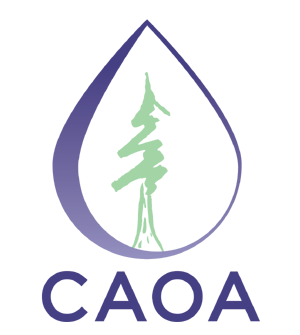By Kelly Ablard, PhD, RA
Aromatherapy, as defined by the National Association for Holistic Aromatherapy, is “the art and science of utilizing naturally extracted aromatic essences from plants to balance, harmonize and promote the health of body, mind and spirit. It seeks to unify physiological, psychological and spiritual processes to enhance an individual’s innate healing process.”
Research conducted in Peru (Ablard, 2016) revealed compelling evidence that aromatherapy, as defined above, is a form of traditional medicine (TM) used often as a first-line treatment throughout Peru. Aromatic plant medicine (APM) was considered crucial to healing by 100% of the informants questioned; according to a Peruvian Elder, “the aromatic essence of the plant is very powerful.” These powerful essences were utilized by both males and females who ranged in age from 4 to 74 years and by healer and non-healers. A Shipibo teacher said APM is “all healing, mind-balancing, and a source of strength.” Aromatic plant medicine was used daily and was a critical part of their spiritual and healing practices.
The healing process for 50% of the Latin American population in both rural and urban settings begins and ends with TM as it is the only accessible and affordable medicine available. And it is often the preferred treatment; even those who can obtain allopathic medicine generally opt to protect and conserve their indigenous medical systems with their traditional knowledge of, and healing practices using TM (Alban, 1984; Bussmann et al., 2011; Jauregui et al., 2011; Bussmann, 2013).
Traditional medicine not only costs less than allopathic medicine, but it often works better and has fewer side effects. As a result, TM practice has gained the respect of government agencies and health providers in Peru, as well as those in developed countries (Bussmann, 2013; Caceres Guido et al., 2015).
Aromatic Plant Medicine Preparation
Each Peruvian informant knew something about naturally producing aromatic extracts from fresh plant material, and which methods produced less toxins. Extractions were done on the whole plant: leaves, resin, stems, roots, bark, wood, and flowers. Extraction methods included alcohol extraction (tincture), water extraction (infusion or decoction), heat extraction, lipid extraction (infusion), maceration (i.e. crushing) and steam distillation (Ablard, 2016).
Water extractions and maceration were the two extraction methods most frequently observed, solvent and heat extraction methods were the most frequently spoken about, and steam distillation was the least used method. Two reasons for this is that authentic stills are too expensive for communities to purchase, and they are not readily available in the jungles of central Peru. They are so rare that when introducing an Amazonian healer to an essential oil for the first time in his life, he spent hours examining it, questioning its therapeutic properties and applications, and connecting with the plant’s spirit (Ablard, 2016).
While carrying out this research, donated essential oils from Stillpoint Aromatics (Sedona, AZ, USA), were given to numerous remote Peruvian Shipibo communities. The elders and plant medicine healers were trained on how to safely use them. This form of TM was greatly desired, as it was shown to enhance the overall well-being of Shipibo individuals and community members.
Stainless Steel Still
A fundraising initiative was launched to collect the funds for the acquisition and shipping of a 30-litre stainless steel still, expertly designed by Dr. Benoit Roger at Alchemia Solutions (Figure 1). The still’s compact design was specifically intended for the convenience of our dear Shipibo colleagues, allowing for effortless transportation during their expeditions into the Amazon rainforest. Here, they will procure essential oils from a selection of distinctive, responsibly sourced, and ecologically safe Peruvian medicinal and aromatic plants. This endeavor is poised to significantly benefit the community by fostering economic, environmental, cultural, and public health sustainability.
The money was successfully raised for the still, which was received by the Shipibo in April 2024, and the first distillation was carried out on a Peruvian lemongrass with great success (Figures 2 and 3). We look forward to seeing what other aromatic treasures our Shipibo colleagues will create!

A significant donation toward this initiative was made by the Canadian Alliance of Aromatherapy. My dear Shipibo colleagues are most grateful to the CAOA for supporting them, helping preserve their plant medicine, and exploring how modern meets traditional practices. Supporting Indigenous communities should be integral to ethical sourcing, a commitment the CAOA has made as a valued and esteemed member of Airmid Institute.
About the author: Dr. Kelly Ablard is a skilled research and organizational leadership professional and the Founder and Executive Director of Airmid Institute, a non-profit charitable organization dedicated to the global education, research, and sustainable management of medicinal and aromatic plants.
References
Ablard, K. (2016). Exploring Aromatherapy as a Form of Traditional Aromatic Plant Medicine in Peru. International Journal of Professional Holistic Aromatherapy, 5(5), 51-61.
Albán J. (1984). Plantas medicinales usadas en Lima para los trastornos digestivos.Thesis. Facultad de Ciencias Biologicas, Universidad Nacional Mayor de San Marcos, Lima, p190.
Bussmann R W, Malca G, Glenn A, Sharon D, Nilsen B, Parris B, Dubose D, Ruiz D, Saleda J, Martinez M, Carillo L, Walker K, Kuhlman A, Towne- smith A. (2011). Toxicity of medicinal plants used in traditional medicine in Northern Peru. Journal of Ethnopharmacology. 137, p121–140.
Bussmann R W. (2013). The Globalization of Traditional Medicine in Northern Peru: From Shamanism to Molecules. Evidence-Based Complementary and Alternative Medicine. Available: doi:10.1155/2013/291903. Last accessed 15 May 2024.
Caceres Guido P, Ribas A, Gaioli M, Quattrone F, Macchi A. (2015). The state of the integrative medicine in Latin America: The long road to include complementary, natural, and traditional practices in formal health systems. European Journal of Integrative Medicine. 7, p5–12.
Jauregui X, Clavo Z M, Jovel E M, Pardo-de Santayana M. (2011). Plantas con madre: Plants that teach and guide in the shamanic initiation process in the East-Central Peruvian Amazon. Journal of Ethnopharmacology. 134, p739–752.
National Association for Holistic Aromatherapy (NAHA). (2016). Available: www.naha.org. Last accessed 20 January 2016.
.png)
